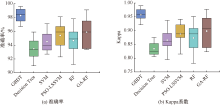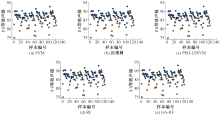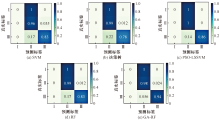| [1] |
顾大钊, 李全生. 基于井下生态保护的煤矿职业健康防护理论与技术体系[J]. 煤炭学报, 2021, 46(3): 950-958.
|
|
GU Dazhao, LI Quansheng. Theoretical framework and key technologies of underground ecological protection based on coal mine occupational health prevention[J]. Journal of China Coal Society, 2021, 46(3): 950-958.
|
| [2] |
SUN Kan, AZMAN A S. Evaluating hearing loss risks in the mining industry through MSHA citations[J]. Journal of Occupational and Environmental Hygiene, 2018, 15(3): 246-262.
doi: 10.1080/15459624.2017.1412584
pmid: 29200378
|
| [3] |
SUN Kan, AZMAN A S, CAMARGO H E, et al. Risk assessment of recordable occupational hearing loss in the mining industry[J]. International Journal of Audiology, 2019, 58(11): 761-768.
doi: 10.1080/14992027.2019.1622041
pmid: 31282793
|
| [4] |
常波峰, 黄伟, 刘宽, 等. 陕西省某煤矿企业噪声职业健康风险评估[J]. 公共卫生与预防医学, 2024, 35(1): 70-73.
|
|
CHANG Bofeng, HUANG Wei, LIU Kuan, et al. Occupational health risk assessment of noise in a coal mining enterprise in Shaanxi province[J]. Journal of Public Health and Preventive Medicine, 2024, 35(1): 70-73.
|
| [5] |
王海椒, 邹晓雪, 刘丽华, 等. 模糊层次分析法在煤矿生产性噪声危害分级评价中的应用[J]. 中国工业医学杂志, 2019, 32(4): 286-289.
|
|
WANG Haijiao, ZOU Xiaoxue, LIU Lihua, et al. Application of fuzzy analytic hierarchy process in classification and evaluation of productive noise hazard[J]. Chinese Journal of Industrial Medicine, 2019, 32(4): 286-289.
|
| [6] |
MILAD A, SAEID Y, ALI A. Developing and validating a risk assessment method for noise-induced hearing loss in workers[J]. Heliyon, 2024, 10(22):DOI: 10.1016/J.HELIYON.2024.E40475.
|
| [7] |
ASGHARI M, GORJI R, MORADZADEH R, et al. A risk model for occupational noise-induced hearing loss in workers[J]. Work, 2023, 77(3): 1017-1022.
doi: 10.3233/WOR-230181
pmid: 37781851
|
| [8] |
QI Haihui, DU Yiyi, TIAN Yu, et al. Research on early warning model of the hearing loss of workers exposed to noise[J]. Chinese Journal of Industrial Hygiene and Occupational Diseases, 2023, 41(1): 47-51.
|
| [9] |
王坤. 机械加工车间环境质量及其职业健康损害评价研究[D]. 重庆: 重庆大学, 2019.
|
|
WANG Kun. Study on environmental quality and occupational health damage assessment in mechanical processing workshop[D]. Chongqing: Chongqing University, 2019.
|
| [10] |
陈春艳, 龚志起. 钢构件生产车间噪声健康损害评价[J]. 科学技术创新, 2021(10): 32-35.
|
| [11] |
李丹丹. 不同类型巷道中噪声危害评价研究[D]. 廊坊: 华北科技学院, 2020.
|
|
LI Dandan. Study on noise hazard evaluation in different types of laneways[D]. Langfang: North China Institute of Science and Technology, 2020.
|
| [12] |
赵玲, 龚加兴, 黄大荣, 等. 基于Fisher Score与最大信息系数的齿轮箱故障特征选择方法[J]. 控制与决策, 2021, 36(9): 2234-2240.
|
|
ZHAO Ling, GONG Jiaxing, HUANG Darong, et al. Fault feature selection method of gearbox based on Fisher Score and maximum information coefficient[J]. Control and Decision, 2021, 36(9): 2 234-2 240.
|
| [13] |
贾改妮, 蒋方, 杨明, 等. 煤矿井下不同作业场所的职业健康损害研究[J]. 中国安全科学学报, 2023, 33(4): 221-229.
doi: 10.16265/j.cnki.issn1003-3033.2023.04.1759
|
|
JIA Gaini, JIANG Fang, YANG Ming, et al. Research on occupational health damage in different working places in underground coal mine[J]. China Safety Science Journal, 2023, 33(4): 221-229.
doi: 10.16265/j.cnki.issn1003-3033.2023.04.1759
|
| [14] |
RESHEF D N, RESHEF Y A, FINUCANE H K, et al. Detecting novel associations in large data sets[J]. Science, 2011, 334(6062): 1518-1524.
doi: 10.1126/science.1205438
pmid: 22174245
|
| [15] |
马陇飞, 萧汉敏, 陶敬伟, 等. 基于梯度提升决策树算法的岩性智能分类方法[J]. 油气地质与采收率, 2022, 29(1): 21-29.
|
|
MA Longfei, XIAO Hanmin, TAO Jingwei, et al. Intelligent lithology classification method based on GBDT algorithm[J]. Petroleum Geology and Recovery Efficiency, 2022, 29(1): 21-29.
|
| [16] |
高晓旭, 高璐, 潘相旭, 等. 基于t-SSA-BP的煤矿噪声职业健康损害预测[J]. 中国安全科学学报, 2023, 33(12): 214-222.
doi: 10.16265/j.cnki.issn1003-3033.2023.12.2068
|
|
GAO Xiaoxu, GAO Lu, PAN Xiangxu, et al. Prediction of occupational health damage caused by coal mine noise based on t-SSA-BP[J]. China Safety Science Journal, 2023, 33(12): 214-222.
doi: 10.16265/j.cnki.issn1003-3033.2023.12.2068
|
| [17] |
韩启迪, 张小桐, 申维. 基于梯度提升决策树(GBDT)算法的岩性识别技术[J]. 矿物岩石地球化学通报, 2018, 37(6): 1173-1180.
|
|
HAN Qidi, ZHANG Xiaotong, SHEN Wei. Lithology identification technology based on gradient boosting decision tree (GBDT) algorithm[J]. Bulletin of Mineralogy, Petrology and Geochemistry, 2018, 37(6): 1 173-1 180.
|





















